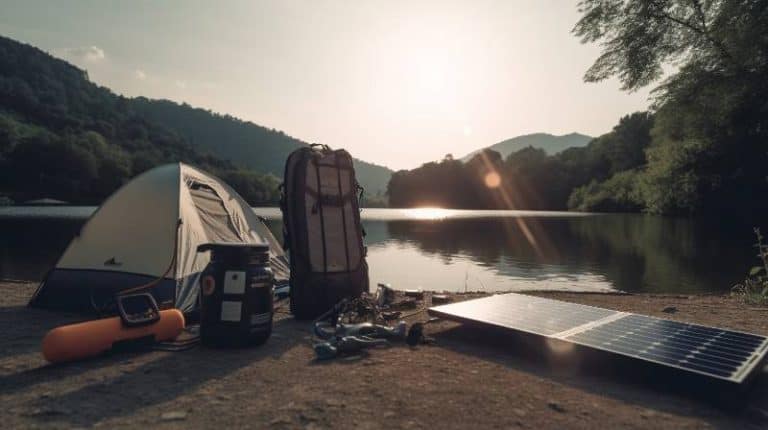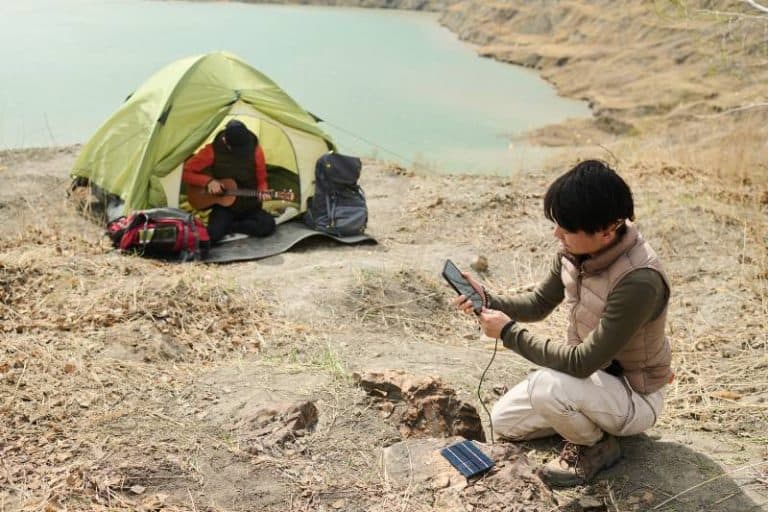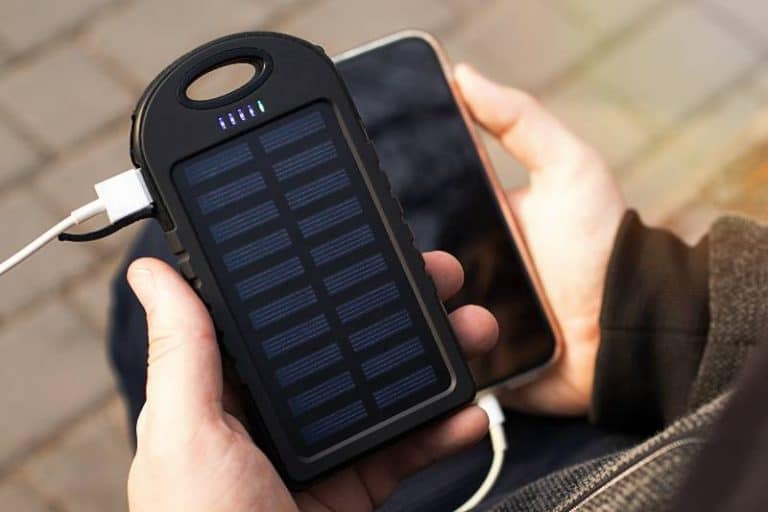Kids Solar Panel Education: What To Know About Solar Energy
Hi, I’m Tom Kitti, founder of Electrik Living, an online platform for electric transport and clean energy education. As a dad to my young daughter Trinity, I often think about the planet she’s inheriting. That motivates my mission to accelerate society’s transition to sustainability.
I believe teaching kids about renewable energy like solar power is key for raising eco-conscious, solution-oriented generations. Children’s innate curiosity makes topics like photovoltaic solar panels fascinating when presented clearly. Early exposure to sustainability concepts via fun, hands-on learning also yields lasting impacts on their worldviews and future career pursuits.
Key Takeaways
- Solar education teaches kids about renewable energy while allowing hands-on science projects.
- Schools are incorporating solar panels and focused curricula to engage students.
- Early exposure to solar power can lead to creative problem-solving and careers in sustainability.
Introducing Children to the Power of Solar
Demystifying Solar Science for Young Minds
Explaining exactly how solar cells convert photons from sunlight into usable electricity demystifies the technology while highlighting applied science principles. I advise using tangible examples that resonate with kids, like solar-powered toys, gadgets, or models. For young children, simply conveying solar as “special energy from the sun” can suffice to spur curiosity.
Interactive experiments that illuminate solar concepts do wonders as well! Things like constructing miniature solar cars or ovens, arranging solar jewelry pieces that light up, or wiring simple electrical circuits powered by small solar cells or panels all make abstract ideas tangible.
Inspiring the Next Generation of Change-Makers
Beyond sheer scientific intrigue, I believe introducing solar technology as a force for good inspires kids to be sustainability advocates. Demonstrating how solar helps provide clean power without harmful emissions or waste lets children grasp its environmental and social impacts.
I foam at the mouth dreaming up fun solar science projects to try with my daughter when she’s older! I hope that her generation will push ahead full force in pursuing renewable energy careers and innovations to address the climate crisis. Early positive exposure via hands-on solar kits could make an impressionable youth far more likely to choose that direction.
Schools Incorporate Solar Hands-On Learning
Many schools now integrate solar energy and environmental concepts into dedicated curricula and activities, like:
- Installing rooftop solar systems to offset grid dependence
- Building solar suitcase kits to power small devices and learning principles
- Offering solar-focused science electives and after-school programs
- Sponsoring renewable energy contests and events
- Founding sustainability clubs and workshops
Seeing tangible solar applications in their schools empowers students to associate these technologies with viable careers. It also demystifies tangible pathways to advancing renewable energy.
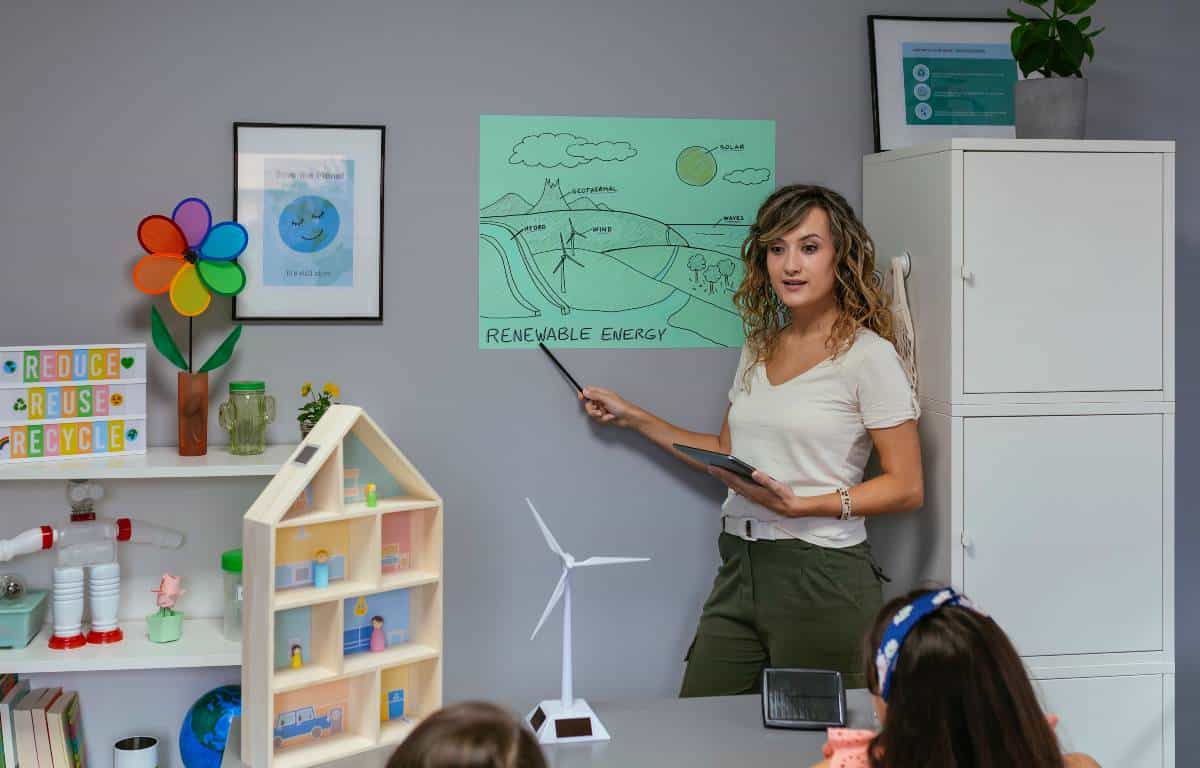
Overcoming Challenges in Solar Education
Effective solar learning requires motivated teaching and administration. While most youth inherently find solar power intriguing, outdated educational approaches can torpedo that enthusiasm.
To expand solar education, schools face barriers like:
- Accessing project funding and solar equipment
- Competing with engrained disciplinary focuses
- Adapting rigid curricula to incorporate new hands-on content
- Convincing veteran faculty who are resistant to change
Proactive administrators can pave the way through actions like:
- Highlighting solar power’s alignment with mandated science standards
- Tapping Into external funding programs and corporate sponsorships
- Starting solar programs in extracurriculars before integrating schoolwide
- Prioritizing teacher training programs on renewable technologies
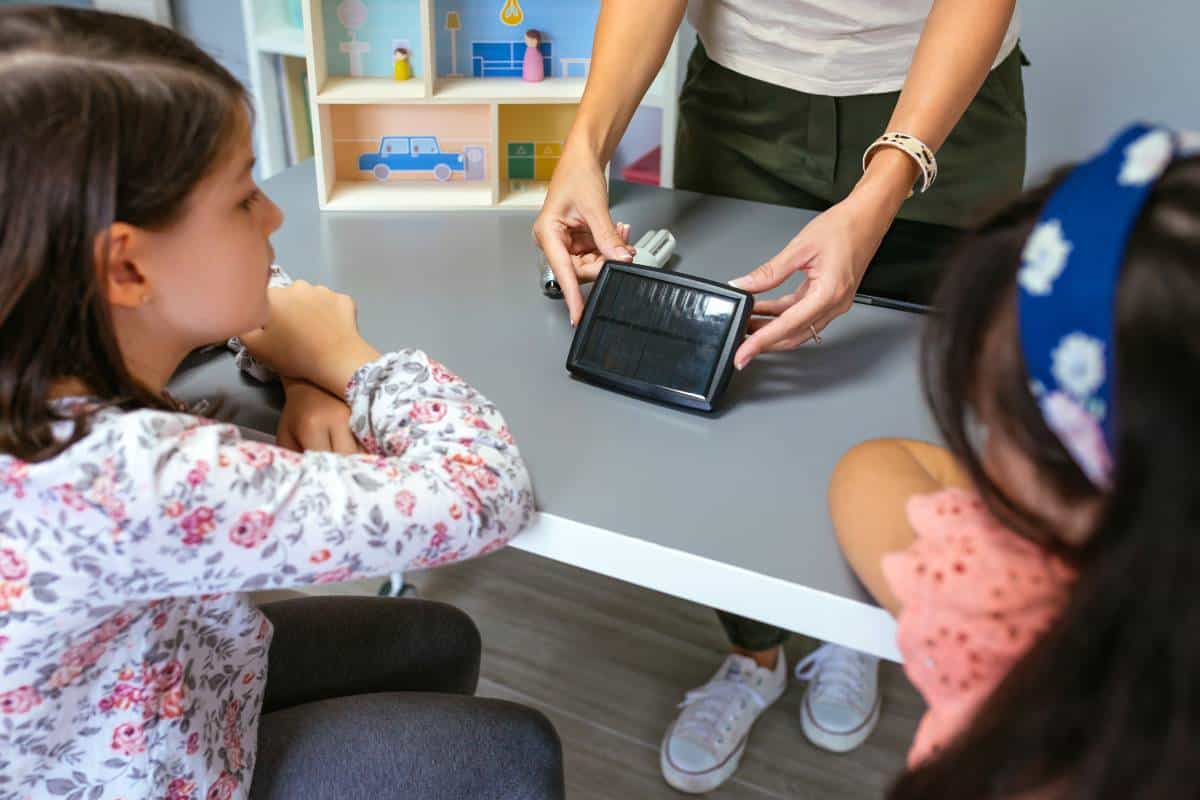
Frequently Asked Questions
What age is best to start teaching kids about solar power?
Elementary school years are ideal. Young children are inherently inquisitive and less inhibited about trying hands-on science projects that middle schoolers may consider “uncool”. Start with simple topics like the sun as an energy source before advancing to technical solar concepts.
What are the best solar experiments for young kids?
Have them make solar ovens to cook food or crafts using pizza boxes and aluminum foil. Trying mini solar cars made from model kits allows them to grasp the conversion of sun energy into movement. Simple electrical circuit kits powered by small photovoltaic cells also open eyes to practical applications.
What core science and technology concepts can solar power teach?
Key concepts solar touches on include physics topics like light waves, electricity, and energy transformation; engineering design via prototyping solar-powered devices; environmental science in examining sustainability impacts; and even social studies by analyzing solar’s role across cultures.
How can schools with limited budgets incorporate solar learning?
Leverage free online solar curricula instead of expensive premade kits when able. Have students learn by designing their own experimental solar devices from everyday materials. When possible, apply for corporate-sponsored solar grants or governmental funding to access starter equipment.
What lasting impacts can solar education have on kids?
Beyond deepening science knowledge, solar schooling cultivates critical thinking, environmental consciousness, and inclinations toward sustainability that shape life perspectives. It also heightens awareness of renewable energy career paths. Early exposure to solar advances both intellectual and social development in students.
What age groups are suitable for learning about solar energy?
Learning about solar energy is suitable for kids of various age groups, with age-appropriate activities and educational materials available for children as young as 5 years old and older kids with a deeper interest in solar energy.
Where can I find solar kits for kids?
Solar kits for kids are available for purchase at educational toy stores, online retailers, science museums, and renewable energy education organizations, offering a range of solar-powered gadgets and projects for kids to learn about solar energy.
Conclusion
Equipping young students to grasp solar technology and its real-world impacts is a shining path toward a sustainable future. We need progressive, environmentally-conscious generations if we hope to preserve the planet for our children. Positive early exposure engenders affinity towards renewable energy and makes related careers resonate.
Let’s nurture our youth’s enthusiasm and capacities through joyful, hands-on solar education. Our future depends on it!
Have questions? See the FAQs below or schedule a consultation to discuss solar education programs perfect for your school.


